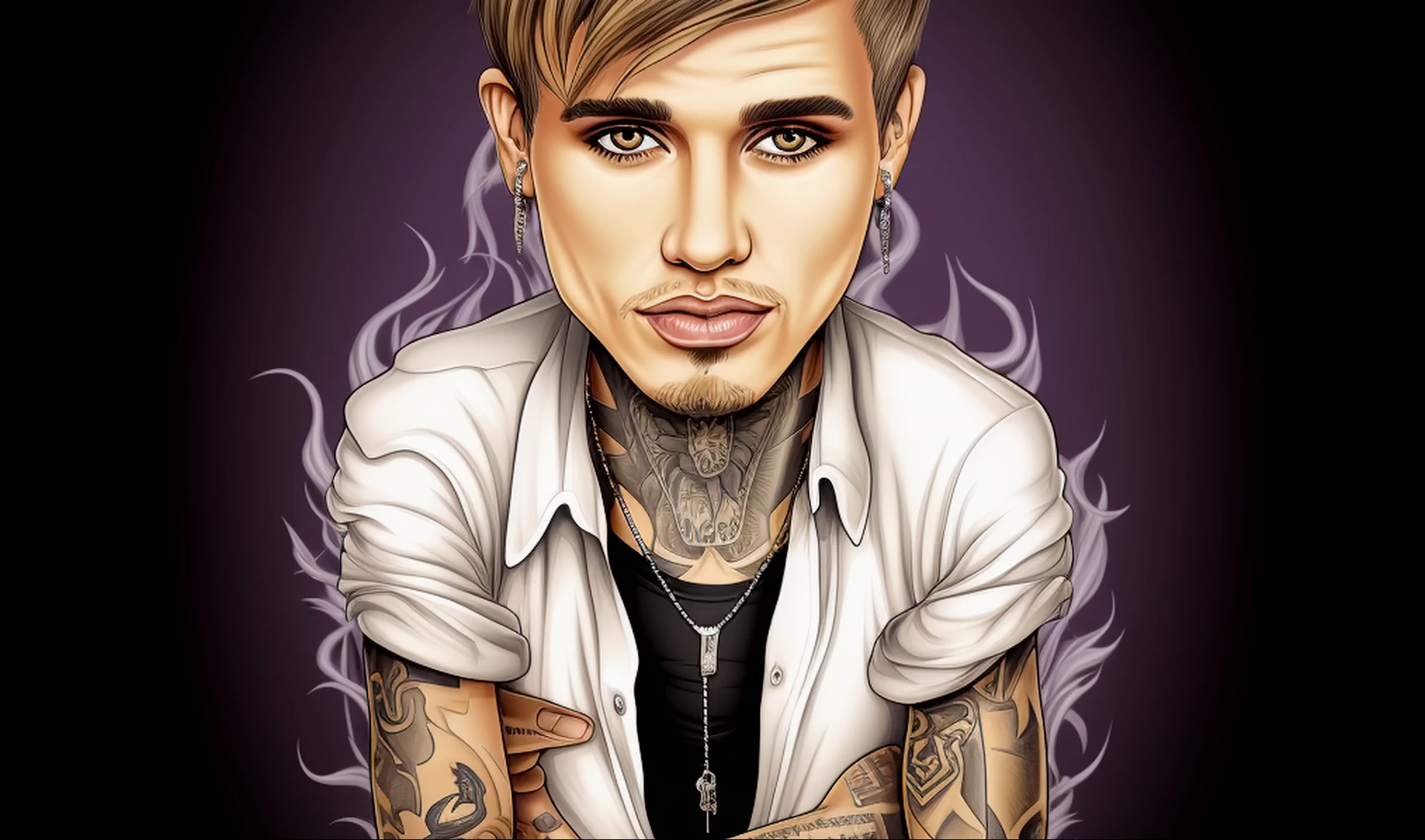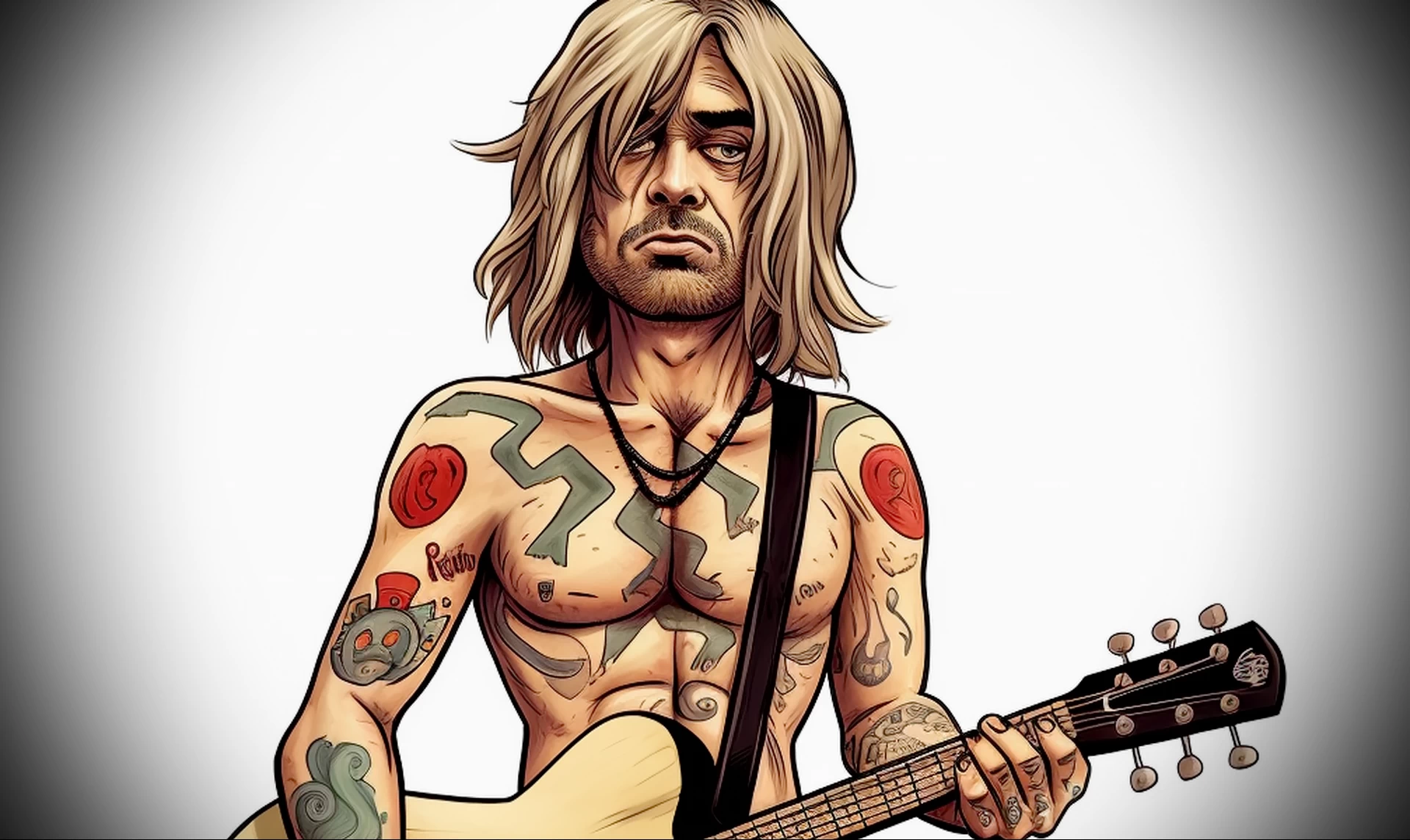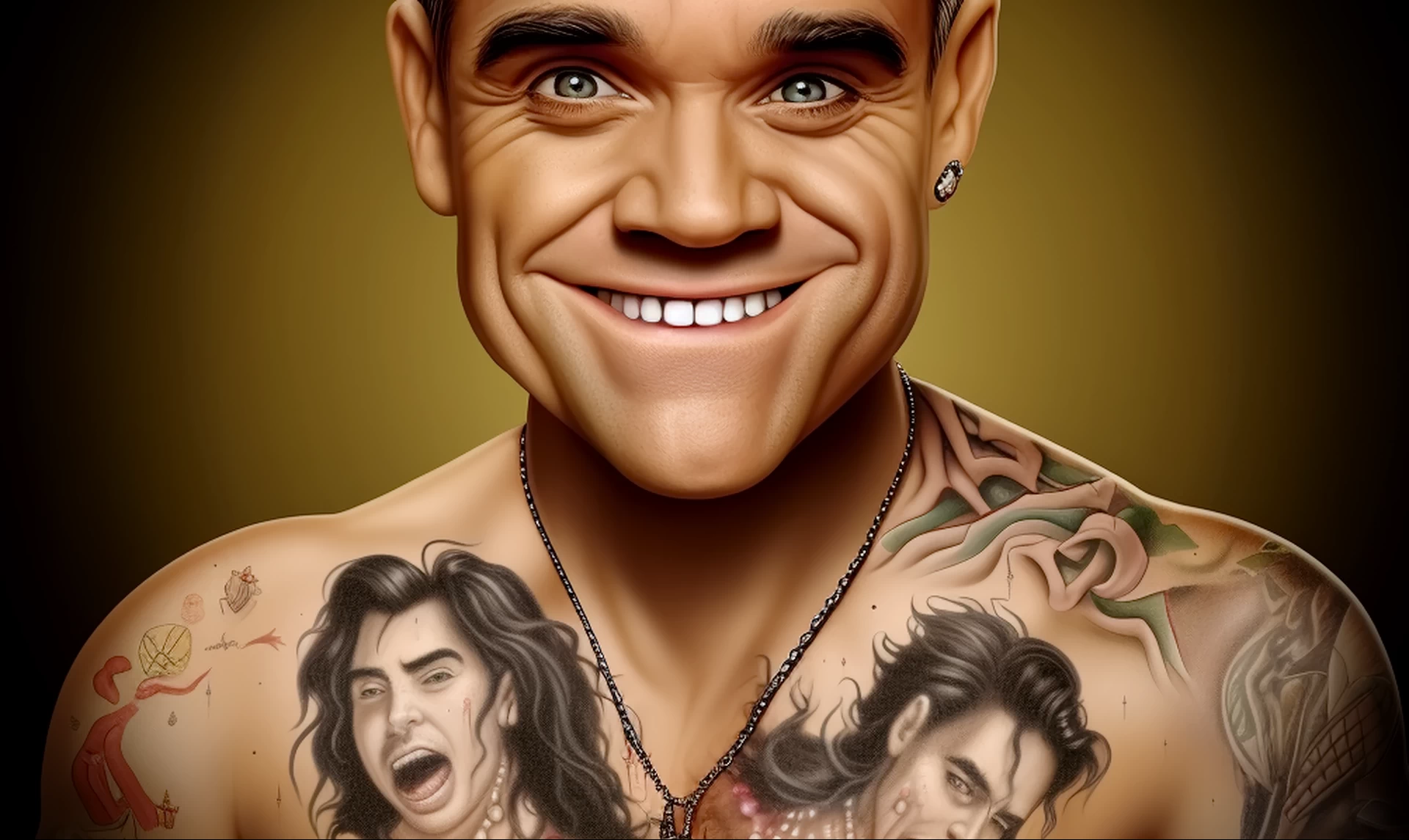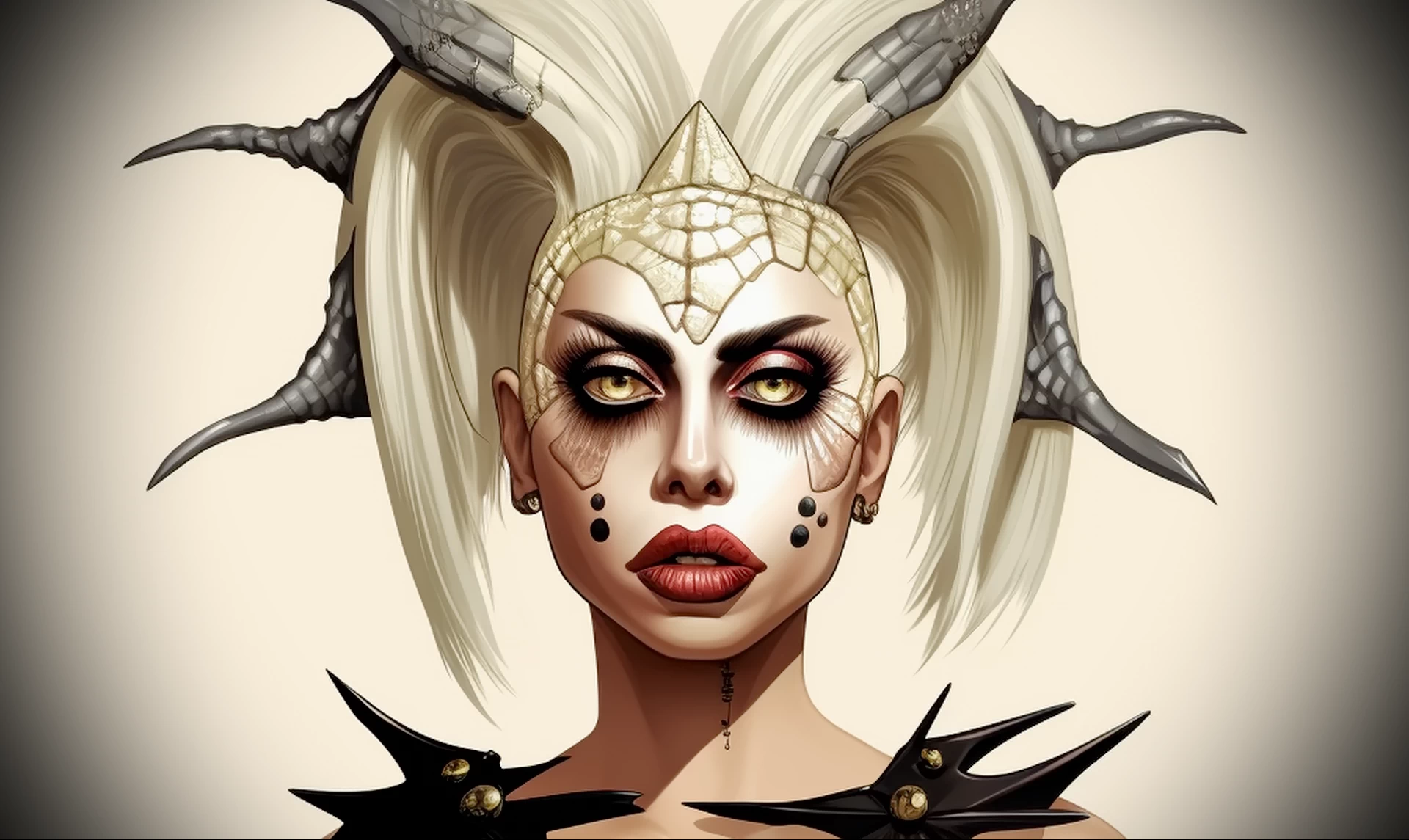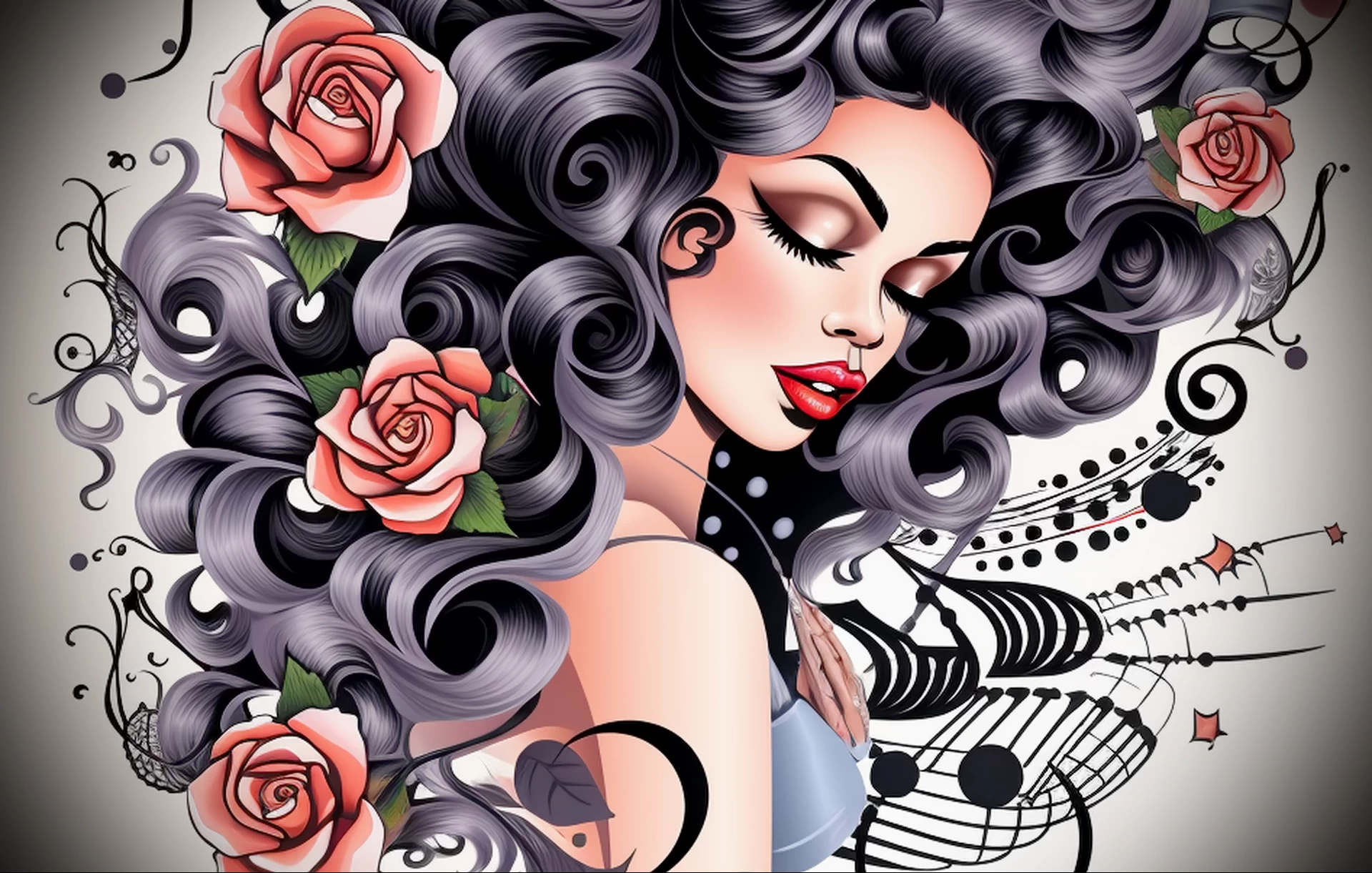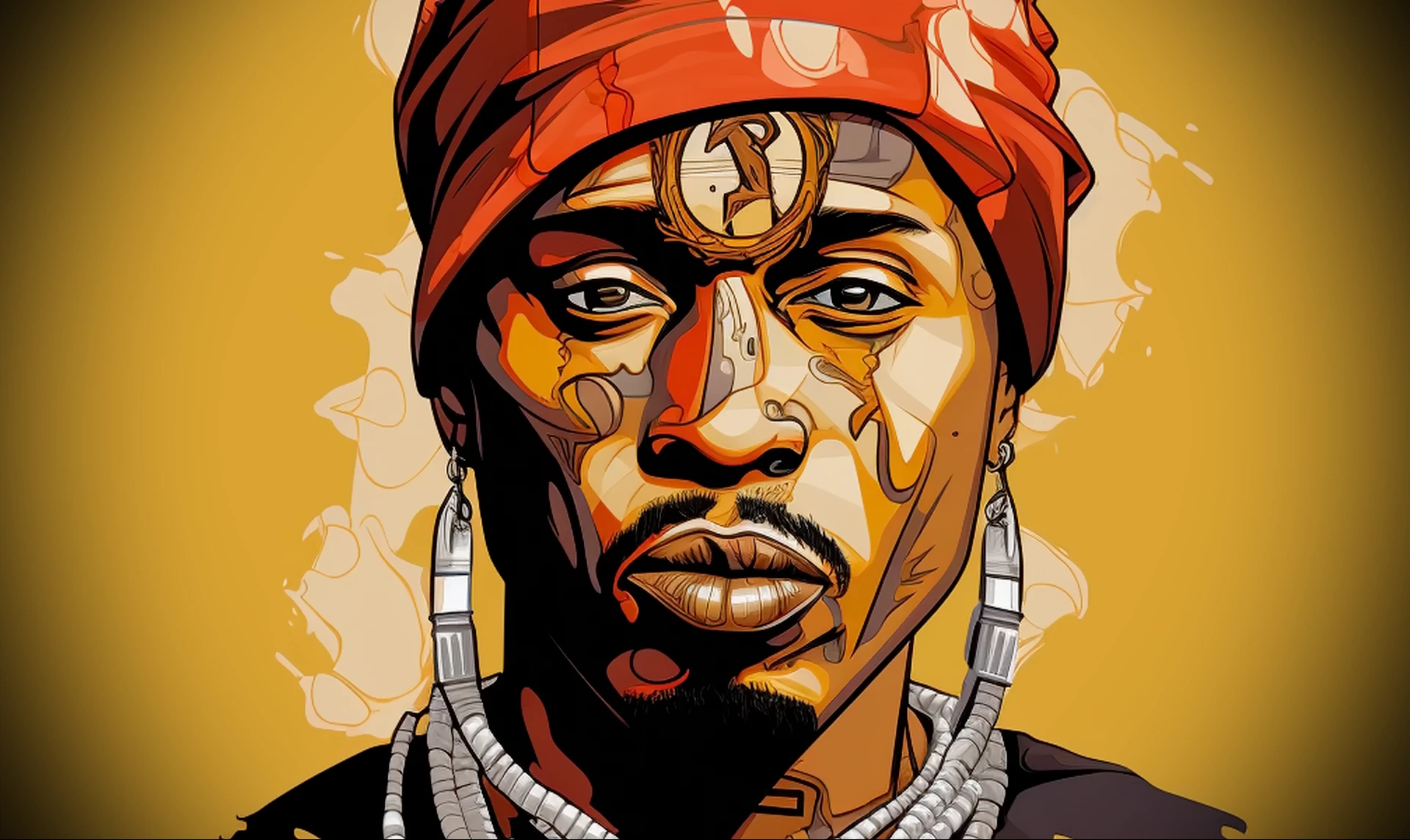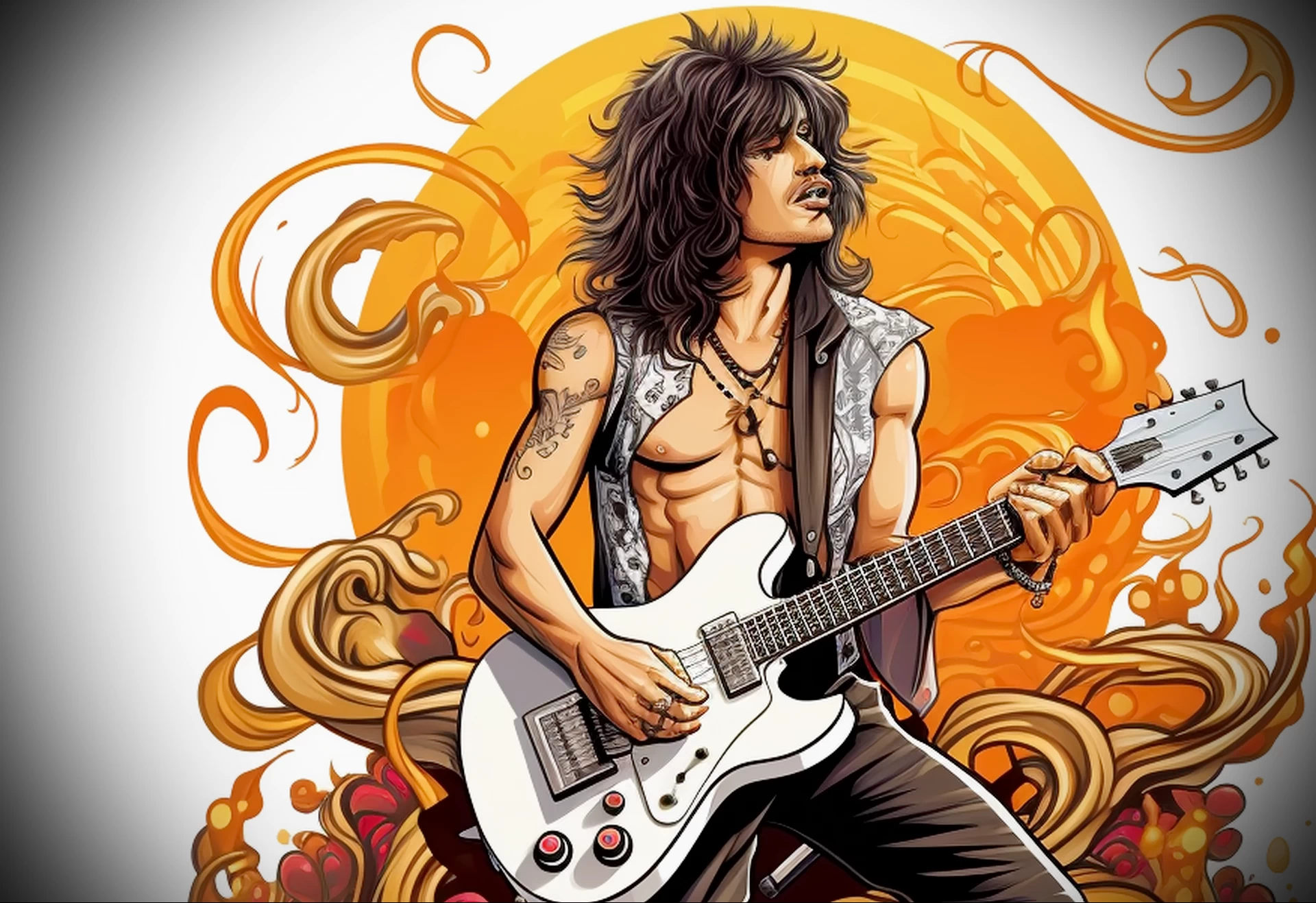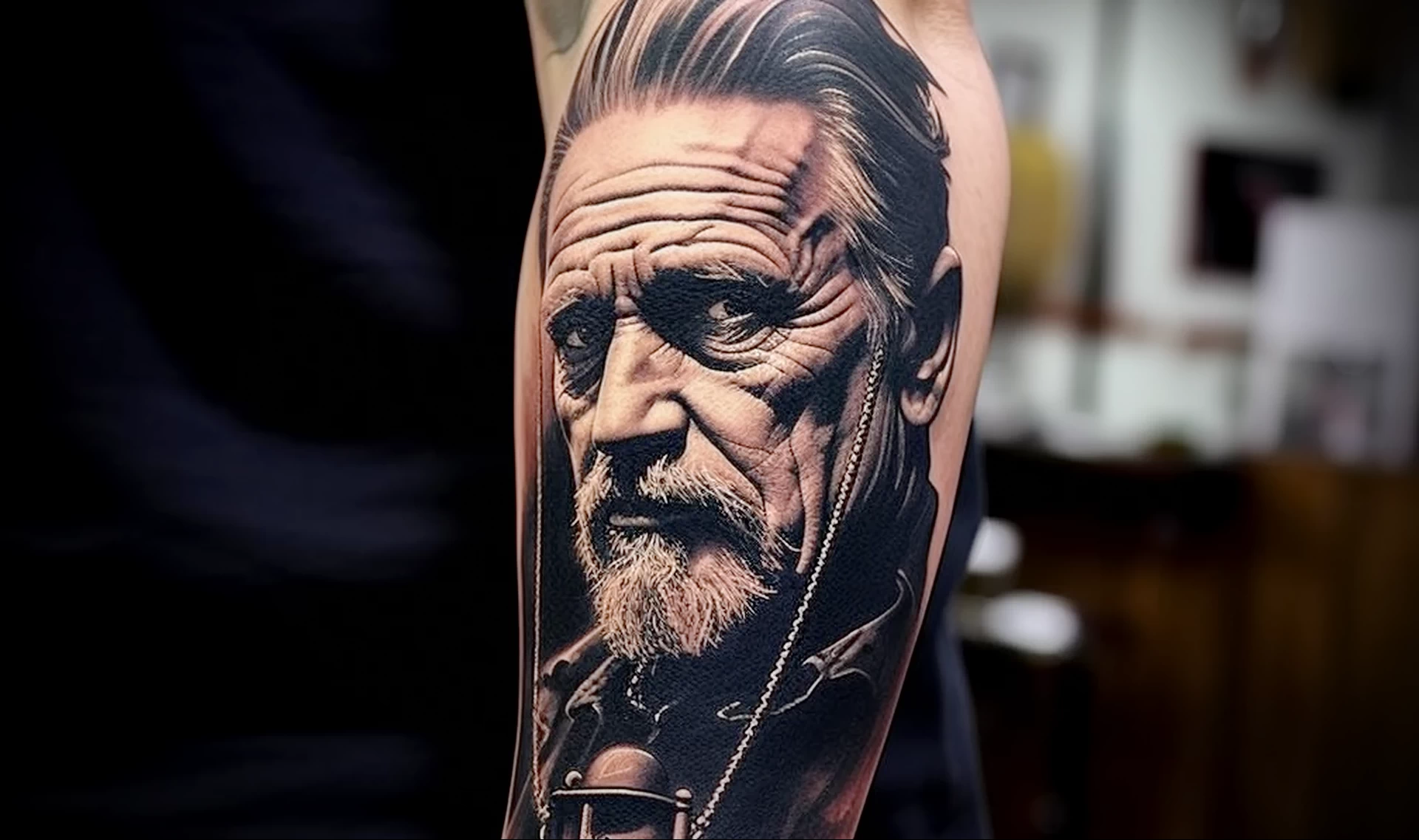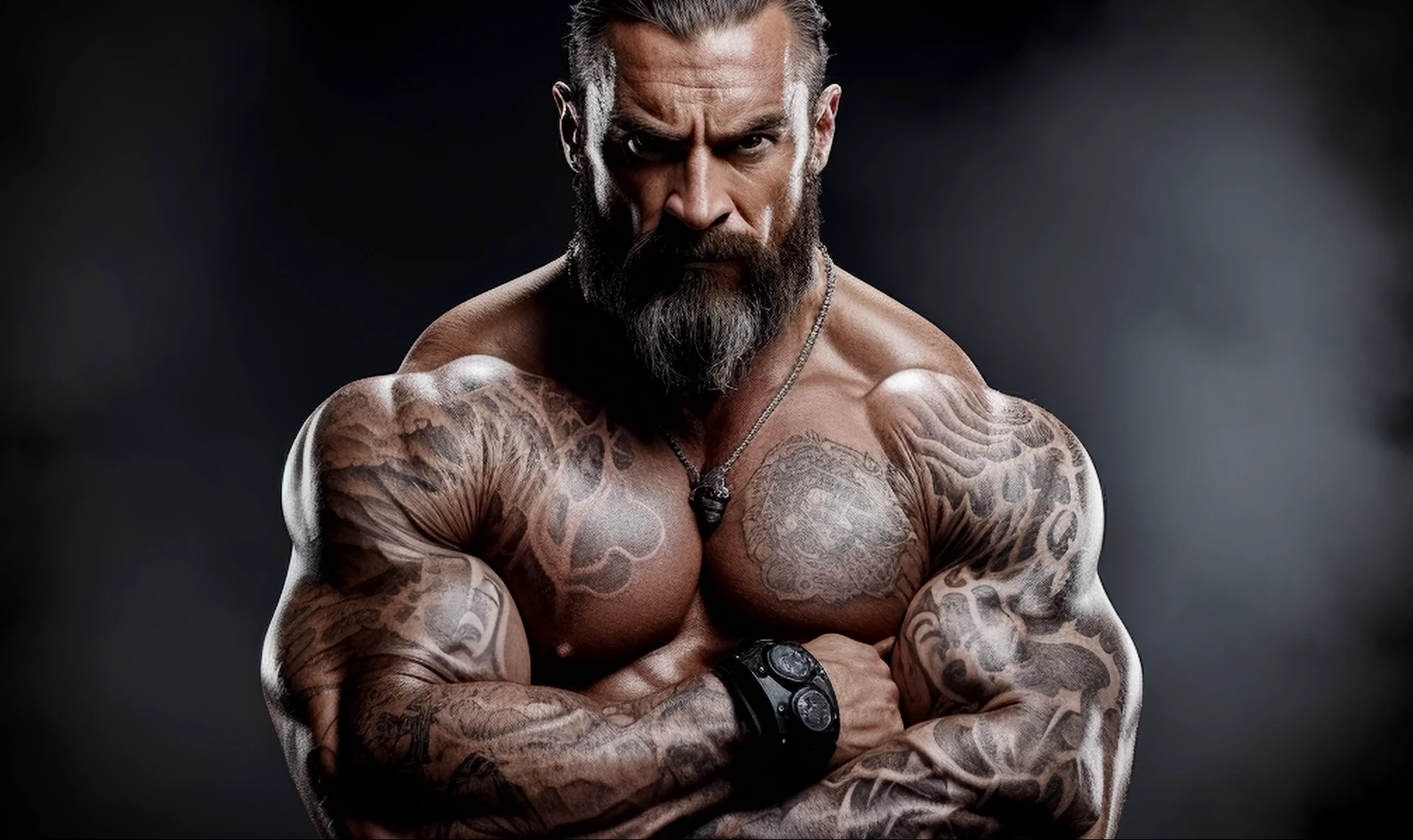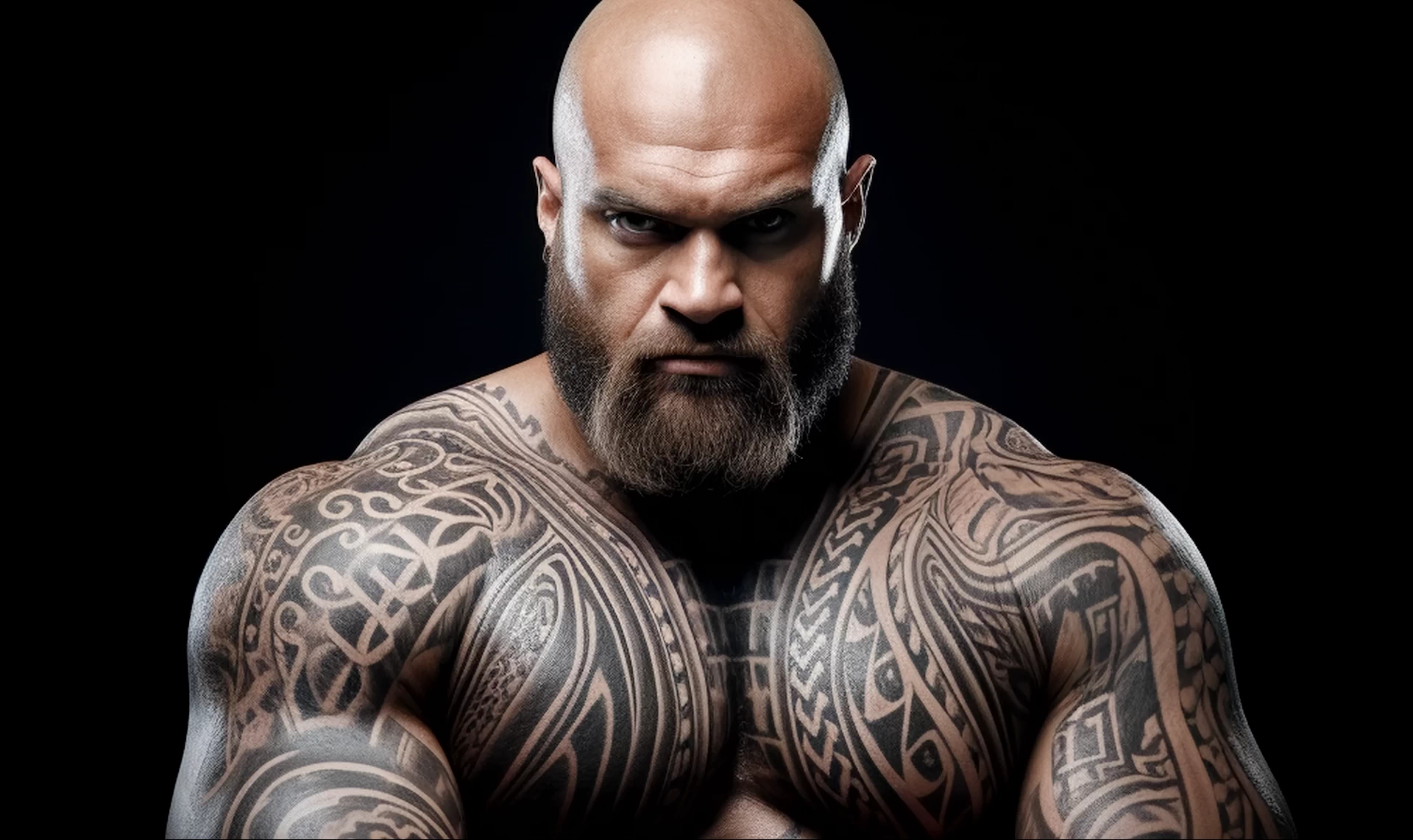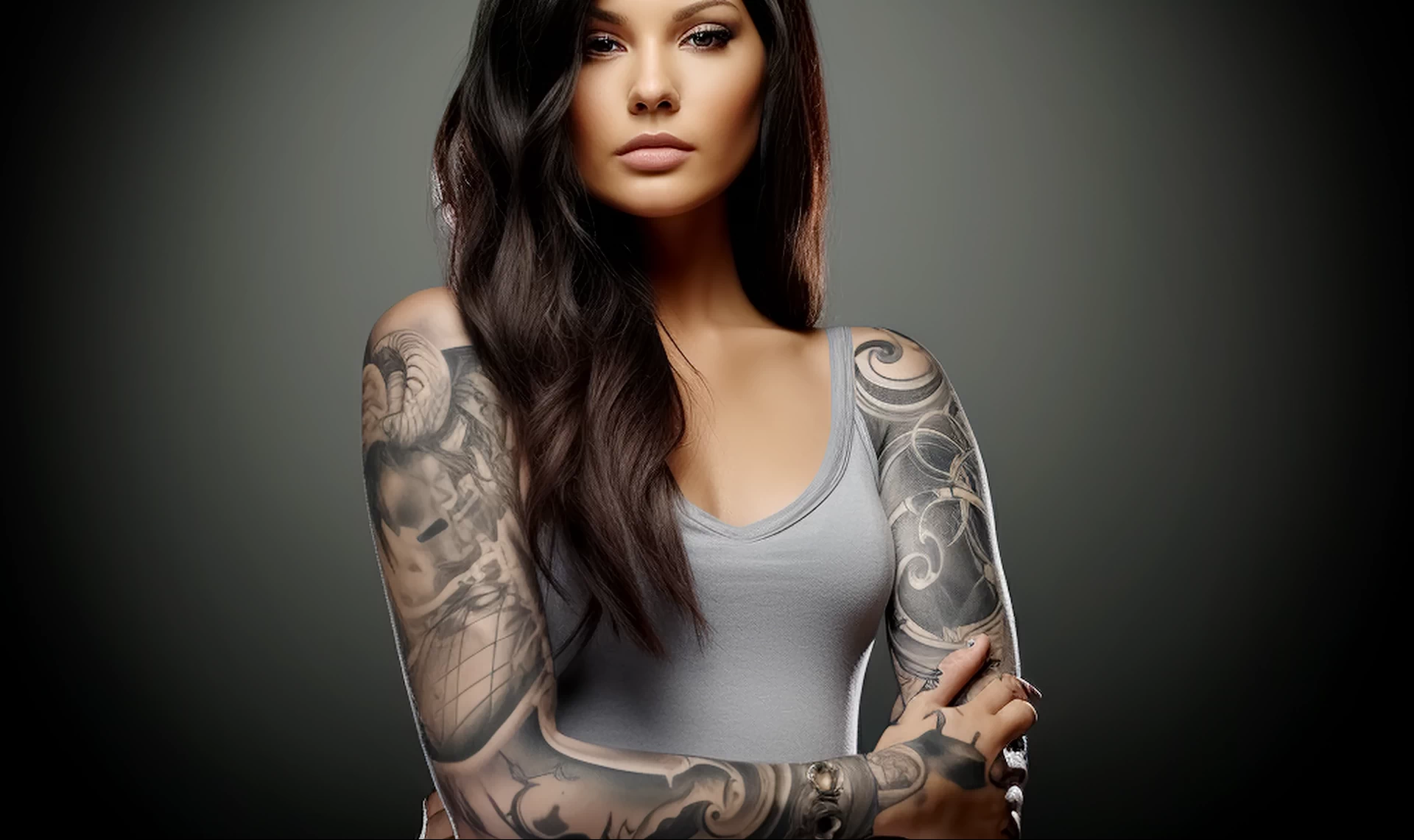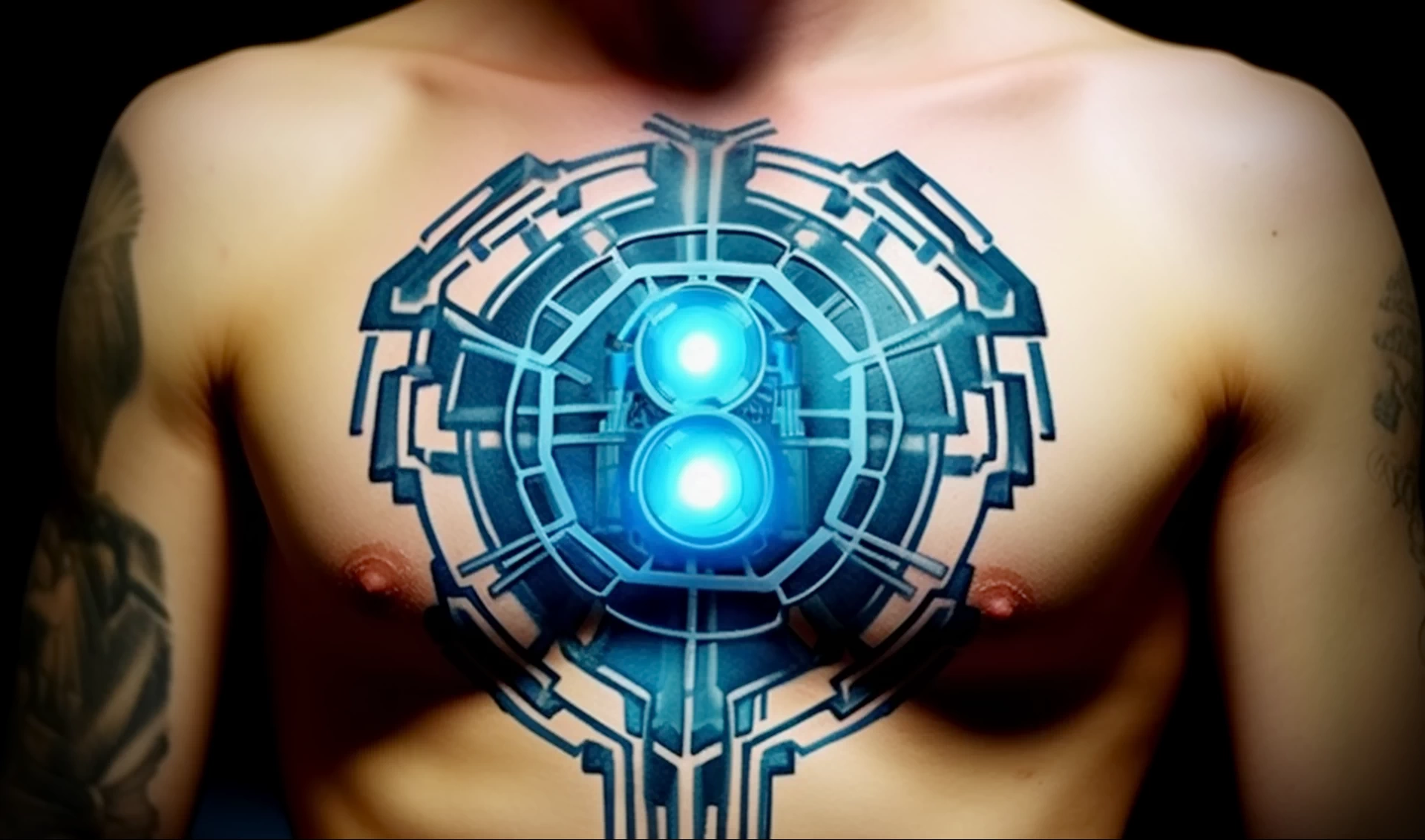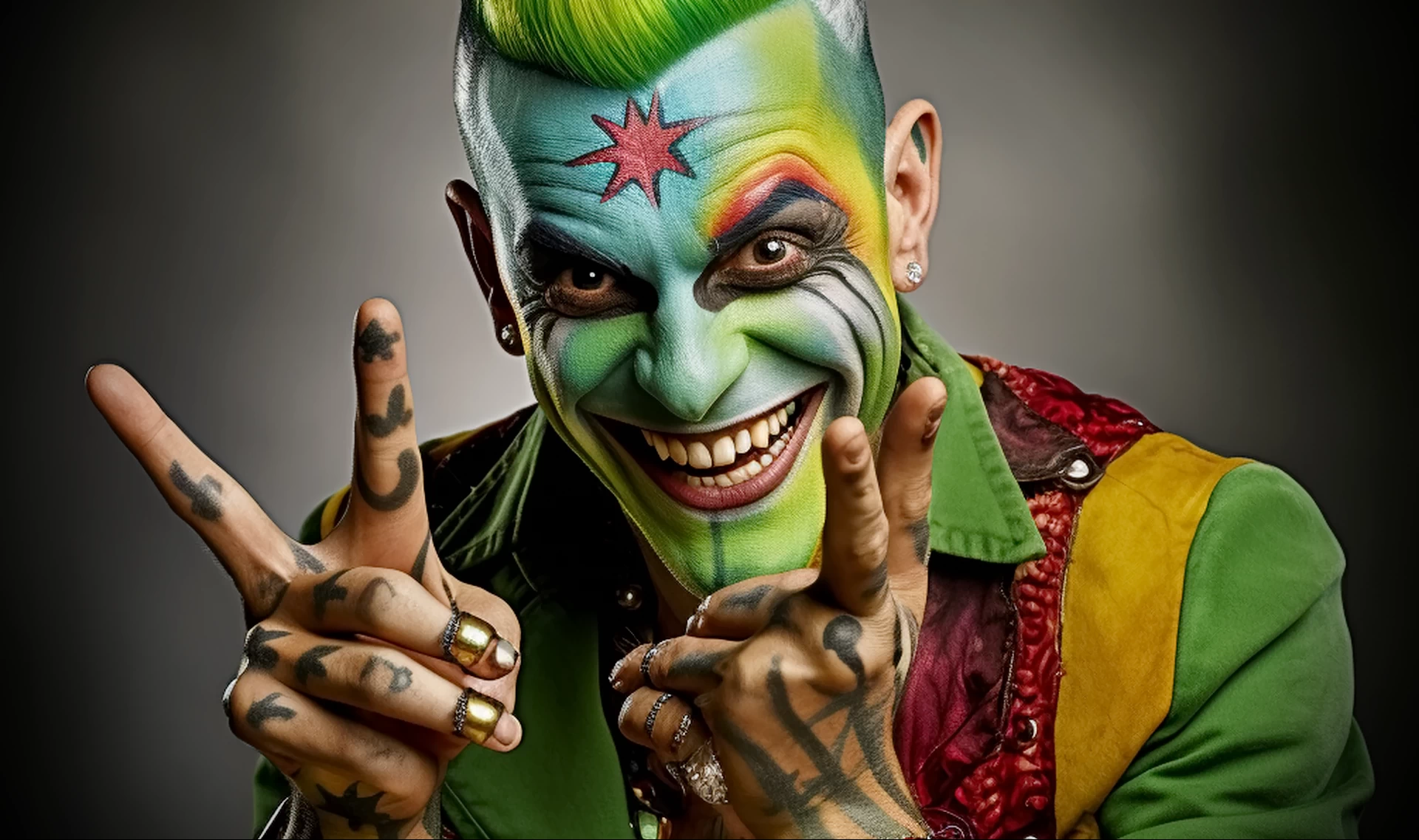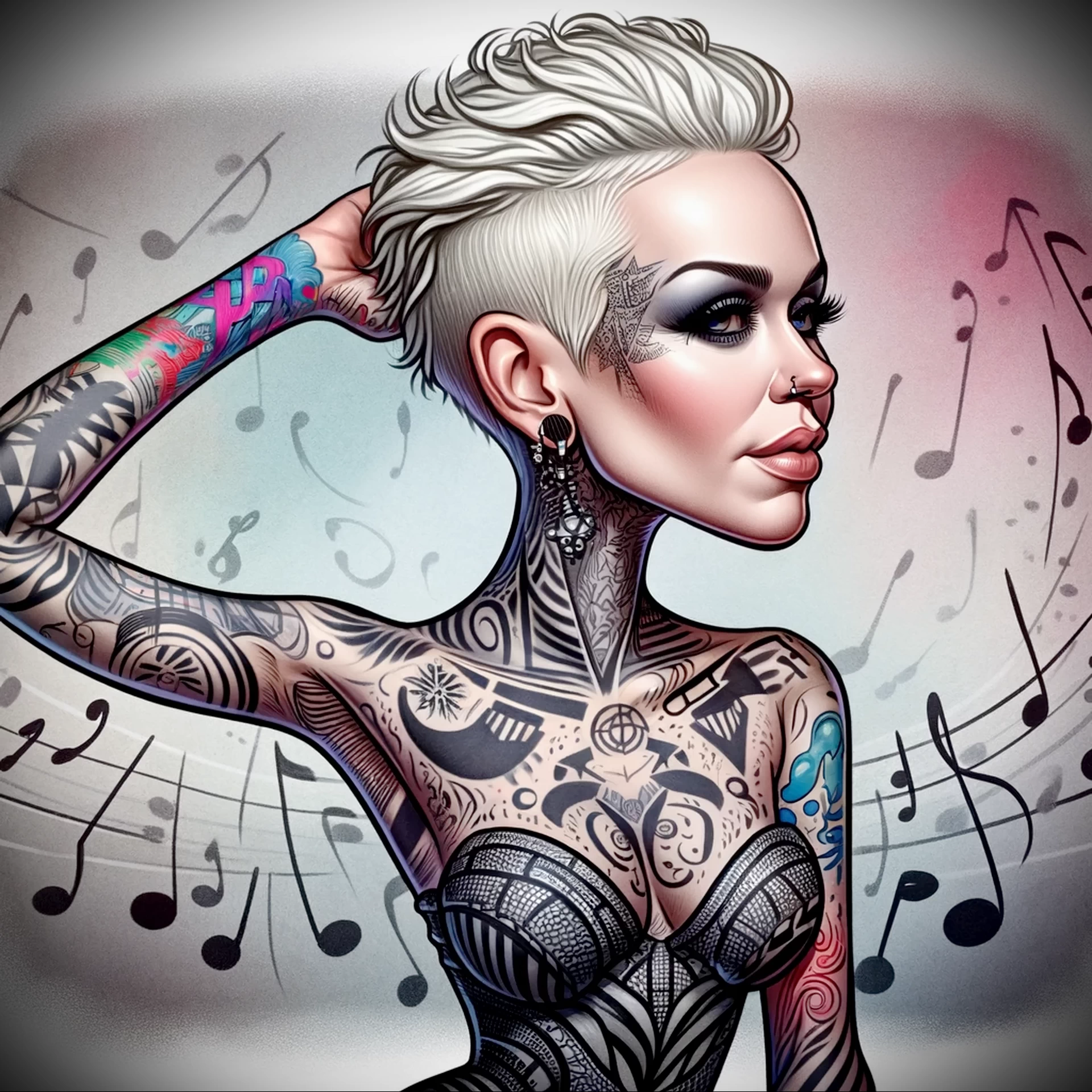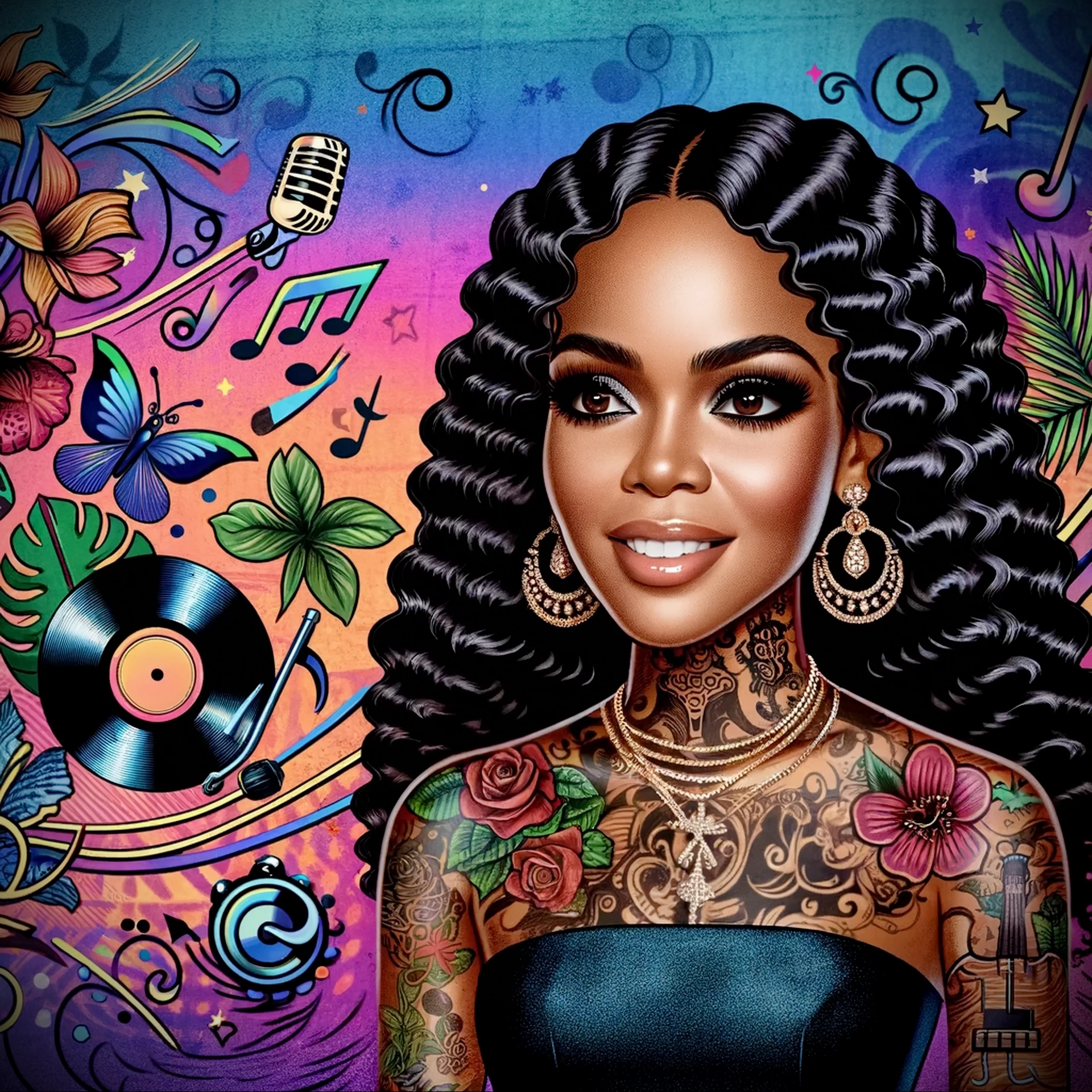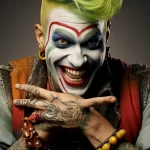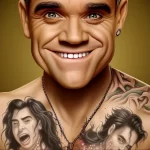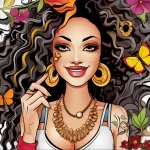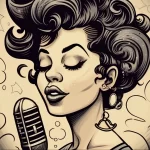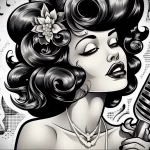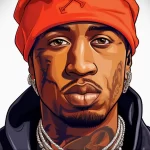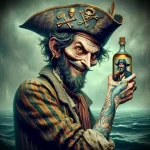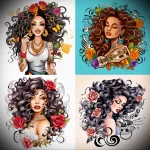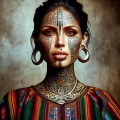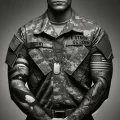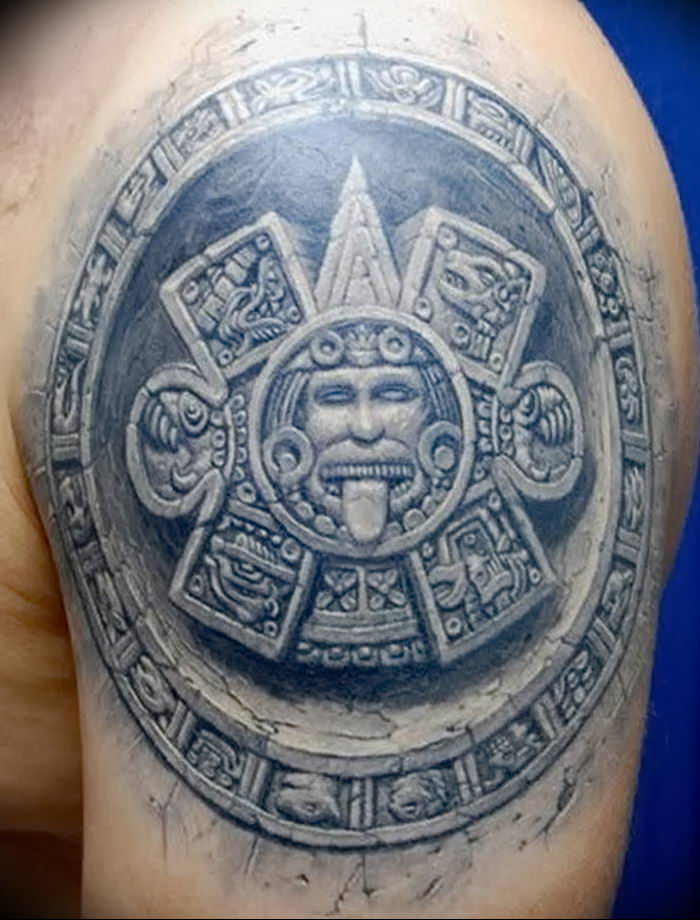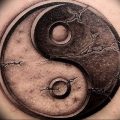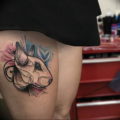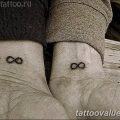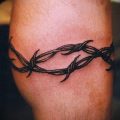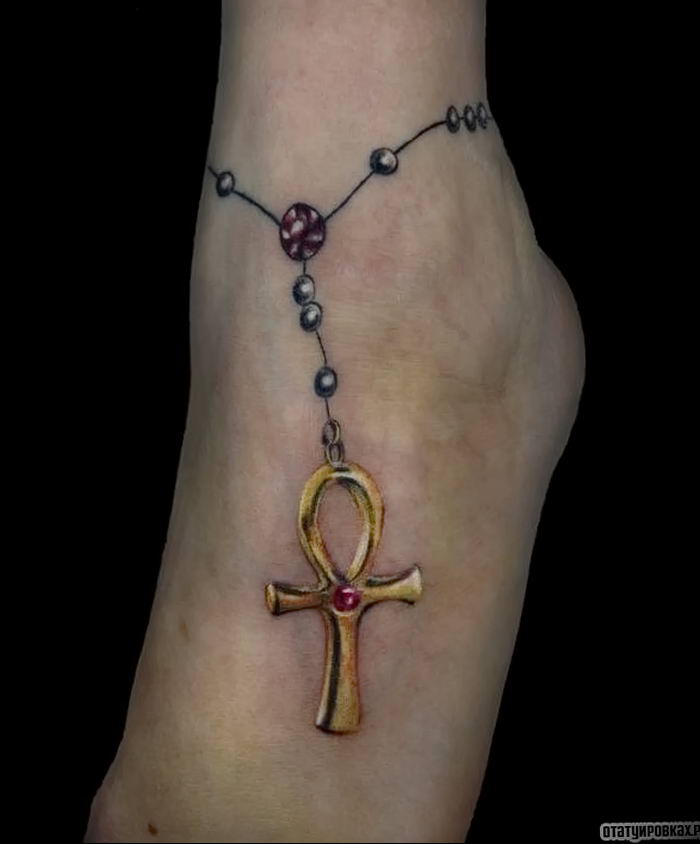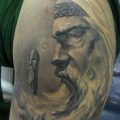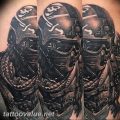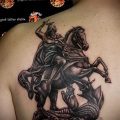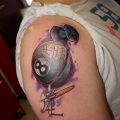In a world where every tattooed image carries a special meaning and story, tattoos have become something more than mere skin adornment. They have permeated every niche of pop culture, becoming iconic symbols in cinema, identification marks of musicians, reflections of style in fashion, and a powerful advertising tool. Our article unveils the transformation of tattoos from marginal signs to recognized highlights of contemporary art. Join us on a journey through the vibrant world of tattoos to learn how they have changed their status and influenced mass perception.
All the most interesting about tattoos in cinema, music, fashion, and advertising
Since ancient times, tattoos have been a way of self-expression, a symbol of belonging to a certain social group or culture. However, in the modern world, tattoos have crossed the boundaries of the personal and have become a significant part of pop culture, acquiring new dimensions and meanings. They are not just a drawing on the body, but also a method of communication, a means of influence, and even a marketing tool in the hands of the media. Historically, if primitive people applied tattoos as amulets or marks of a certain status, modern tattoos can be both a deeply personal symbol and a fashion trend embraced by the masses. This article provides a historical overview of tattoos, reflecting their evolution from antiquity to the present day. Moreover, we will delve into the analysis of tattoos as an indispensable element of pop culture, exploring their depiction in cinema, music, fashion, and advertising. The aim of this article is not only to shed light on the influence of tattoos on the media but also to understand how the media, in turn, affect the perception of tattoos in society. The relevance of the topic is due to the growing popularity of tattoos among all layers of the population and their increasingly noticeable role in the media space. Tattoos have long ceased to be exclusively a “rebellious” attribute or an exoticism. They have become a kind of social language, capable of conveying complex messages, and at the same time – an object of commercialization and mass consumption. In this context, the study of the topic of tattoos and media is extremely important for understanding contemporary cultural currents and communication processes.
Tattoos in Cinema The history of tattoos in cinema begins virtually from the inception of the art of film itself. In the earliest black-and-white movies, tattoos were often used to emphasize antisocial behavior or a character’s criminal past. They served as a visual code that helped viewers instantly classify a character as a “villain” or “old salt.” Over time, the significance of tattoos in cinema has become more multifaceted and nuanced.
Tattoos have become an integral part of the image of many cinematic characters, adding depth to their biographies and psychology. For instance, the character of Lisbeth Salander in “The Girl with the Dragon Tattoo” has become iconic. Her tattoos are not merely adornments, but also a means of self-identification, an expression of her inner world and life experiences. They have become a key to understanding her complex nature and courage.
In cinema, a tattoo often carries deep symbolism. For example, a web tattoo may symbolize fate entangling a character in its threads, while a dragon image represents strength and power. Tattoos are used to convey hints to the viewer about the character’s inner world, their past, or even to foreshadow their fate.
From a technical standpoint, films may use both real and temporary tattoos. Temporary tattoos allow actors to immerse themselves in their roles without the need to permanently alter their bodies. They can be applied with special paints or transfer tattoos that are difficult to distinguish from the real thing.
Cinema also plays a significant role in changing the perception of tattoos in society. Films can simultaneously demonize and romanticize tattoos, influencing fashion and stereotypes. For example, after the release of “The Girl with the Dragon Tattoo,” there was a significant increase in the number of women wanting to get similar tattoos.
Analysis of specific films and series shows that tattoos often play a key role in plot twists. For instance, in the series “Wentworth,” the protagonist’s tattoo is evidence of her innocence and key to unraveling a plot mystery. In other cases, as in “John Wick,” a tattoo serves as a mark of belonging to a secret order.
The cinematic world uses tattoos to deepen character portrayal, to convey ideas and emotions, making tattoos not just part of the visual image, but an important element of the plot.
The Top 20 Most Iconic Film and TV Characters Remembered for Their Tattoos
- Lisbeth Salander from “The Girl with the Dragon Tattoo” – Her complex and significant tattoos are key to her rebellious and secretive image.
- John Wick from the eponymous film series – His back tattoo which hints at his past and connections to the criminal underworld.
- Leonard Shelby from “Memento” – Uses tattoos as a means to remember key information after losing his memory.
- Jack Sparrow from the “Pirates of the Caribbean” series – His famous swallow tattoo on the forearm and the sun on his wrist.
- Michael Scofield from the TV series “Prison Break” – His body is covered with tattoos that hide the blueprint of the prison and other secrets.
- Francis “Frank” Drexler from “True Romance” – The tattooed image of the cult gangster.
- Russell “Crowe” from “Fight Club” – His distinctive tattoos emphasize his antisocial persona.
- Sir Davos Seaworth from “Game of Thrones” – His shortened fingers and tattoos speak of the character’s past as a smuggler.
- Hector Barbossa from “Pirates of the Caribbean” – His tattoos underscore his piratical essence.
- Jane Doe from the TV series “Blindspot” – Her body is completely covered in tattoos, which are key to the series’ mysteries.
- Vega from “Street Fighter” – His bright tattoos underscore his combative nature and skills.
- Derek Vinyard from “American History X” – The swastika tattoo on his chest is a powerful symbol of his radical views.
- Snake Plissken from “Escape from New York” – The cobra tattooed on his stomach symbolizes his toughness and danger.
- Blade from the eponymous film series – His symbolic tattoos underline his supernatural abilities and hunter’s path.
- Sarah Connor from “Terminator” – Her tattoo of a fiery phoenix symbolizes rebirth and strength.
- Winston “The Wolf” Wolfe from “Pulp Fiction” – His bulldog tattoo on the shoulder adds charisma to his problem-solver character.
- Ricardo Montalbán as Khan Noonien Singh in “Star Trek” – Distinctive tattoos that underscore his status as a genetically enhanced human.
- Stansfield from “Léon: The Professional” – His thin and elegant tattoos highlight his style and criminal sophistication.
- Seth Gecko from “From Dusk Till Dawn” – His neck tattoo demonstrates his restless and dangerous nature.
- Emperor Commodus from “Gladiator” – Though he did not have prominent tattoos, his character could be included in the list due to the expected influence of Roman tattoo culture on his persona.
Tattoos in the Music Industry
In the music industry, tattoos often become an integral part of an artist’s image, a symbol of their individuality and musical style. Tattooed stars are not just an indicator of their creative self-expression but also a powerful tool for impacting their fandom and marketing.
The image of a tattooed musician has long been a potent element of persona, intimately entwined with the ethos of rock-n-roll and hip-hop. These musical genres, akin to the art of tattooing, are frequently synonymous with rebellion, freedom of expression, and the defiance of conventional norms. It was rockers and rappers who pioneered the widespread use of tattoos, transforming their bodies into canvases that narrate the tales of their lives, beliefs, and artistry.
The relationship between tattoos and fandom is one of intricate connectivity. Fans often emulate the tattoos of their idols as a gesture of solidarity or admiration. This emulation might manifest as a replication of a renowned tattoo—such as the words “Love” and “Hate” across the knuckles of a rockstar—or as a unique emblem associated with a cherished song or album.
For celebrities, personal and symbolic tattoos can serve as a profound narrative device for their personal lives or careers. Many musicians utilize tattoos as a means of articulating their emotions, experiences, losses, or triumphs.
In the realm of marketing and branding, tattoos often become a component of an artist’s signature image. A tattoo can evolve into a logo used in merchandise, album covers, music videos, and promotional materials, crafting a distinctive persona that distinguishes the artist from others.
Let’s delve into the examples of musicians and their tattoos:
- David Bowie – Known for his chameleonic image changes and experiments, Bowie had several prominent tattoos symbolizing different facets of his artistic journey.
- Freddie Mercury – The iconic lead singer of Queen sported tattoos that resonated with his zodiac sign.
- Johnny Cash – The legendary American singer-songwriter had tattoos reflecting his life’s journey and his faith.
- Amy Winehouse – Her pin-up and vintage style tattoos complemented her unique vocal style and image.
- Tupac Shakur – The rapper’s tattoos were closely linked to his musical themes and life philosophy.
- Rihanna – With numerous tattoos reflecting her cultural heritage and personal convictions, Rihanna is considered one of the most tattooed singers.
- Lenny Kravitz – He has tattoos that reflect his spiritual beliefs and dedication to music.
- Lady Gaga – The singer and songwriter often showcases tattoos that narrate her artistic journey and inspirations.
- Travis Barker – The drummer for Blink-182 is known for his almost entirely tattoo-covered body.
- Robbie Williams – His tattoos reflect significant events in his life and career.
- Ed Sheeran – The singer has many tattoos, each with personal significance or tied to his musical career.
- Post Malone – Known for his facial tattoos and other body art, which have become part of his image.
- Kurt Cobain – The late Nirvana frontman had several tattoos connected to his musical expression.
- Justin Bieber – Bieber’s numerous tattoos cover much of his body, reflecting religious, emotional, and artistic themes.
- Demi Lovato – The singer uses her tattoos to tell stories of her struggles and triumphs.
- Katy Perry – Has tattoos that signify important milestones in her career and life.
- Harry Styles – Former member of One Direction and solo artist whose tattoos have become part of his public image and music performances.
- Billie Joe Armstrong – Frontman of Green Day, his tattoos often reflect his political beliefs and musical influences.
- Lil Wayne – His body is covered with numerous tattoos, each with its own meaning and history.
- Selena Gomez – Has several small and significant tattoos that she occasionally showcases in her music videos and concerts.
These artists are not only popular due to their talent but are also known for their unique use of tattoos as a means of self-expression and part of their artistry.
Tattoos in the music industry continue to be an important means of self-expression, helping musicians to connect with the audience, express their identity, and even advance their careers to a new level.
Tattoos in the World of Fashion
Once considered a mark of rebellion and underground culture, tattoos now hold a respectable place in the world of high fashion. Once a symbol of the marginalized, they have now become a style highlight, an addition to the image, and even a source of inspiration for world designers.
On the runways, fashion houses are increasingly presenting models with tattoos. This shift underscores the evolution of public consciousness: tattoos are no longer an impediment to a career in the modeling business. They have even become a matter of pride and an expression of individuality. Examples of models like Ricardo Tisci and Steven Meisel underscore this trend, opening doors for a multitude of models with tattoos.
Tattoo art has a noticeable influence on the design of clothing and accessories. Ornaments and patterns taken from tattoos are often visible in the collections of well-known brands, from street fashion to haute couture. These elements can be seen in world-famous brands such as Ed Hardy, which builds its entire brand around tattoo design, as well as in premium collections where tattoo motifs serve as accents in the looks.
Collaborations between tattoo artists and fashion brands are becoming increasingly popular. Tattoo artists bring their unique style to the design, resulting in exclusive capsule collections. An example is the collaboration between the fashion house Louis Vuitton and American tattoo artist Scott Campbell, which demonstrated how the worlds of fashion and tattoos can interact, creating something unique and memorable.
Tattoos are becoming an increasingly popular trend in fashion photoshoots and magazines. They are often used to add depth and character to the look, making the photograph more expressive and memorable. Tattoos can emphasize the theme of the shoot or complement the style of the clothing, creating a unique visual language.
Changing perceptions of tattoos in the fashion industry indicates that they have transitioned from the taboo category to the acceptable and even desirable category. Nowadays, tattoos are not only not hidden but also proudly displayed as a part of one’s personality. Thus, the fashion industry has not only recognized tattoos but also embraced them as an essential part of modern culture and fashion trends.
Tattoos in the world of fashion are not just a trend to follow; they are recognized as a form of art that can be as expressive and meaningful as clothing itself.
Top 10 world-famous models with tattoos, briefly explaining the meaning of their tattoos:
- Kate Moss – has several tattoos on her body, including two birds on her lower back symbolizing freedom and independence.
- Cara Delevingne – known for her love of tattoos, including a lion’s head on her finger representing her zodiac sign, Leo, and the word “fearless” on the inside of her finger.
- Freja Beha Erichsen – has a neck tattoo that reads ‘float,’ symbolizing lightness and the ability to stay afloat in life’s challenges.
- Adriana Lima – her ankle tattoo is tribal and dedicated to her mother, and she also has a star behind her ear symbolizing her career success.
- Gisele Bündchen – has a small star on her wrist, signifying happiness.
- Christy Turlington – has a lotus flower tattoo on her left wrist symbolizing purity and enlightenment.
- Alessandra Ambrosio – has the phrase ‘anja amor’ on her body, which translates from Italian to ‘love of my life,’ dedicated to her children.
- Bella Hadid – has a tiny rose tattoo on her arm, a classic symbol of beauty and perfection.
- Lara Stone – a small heart tattoo on her wrist, symbolizing love and passion.
- Gigi Hadid – has several small and personal tattoos, including an Arabic inscription on her hand, which is her sister Bella’s name, meaning “beauty.”
These top models use tattoos not just as decorations but also as a way to express their feelings, ideas, and beliefs, giving them individual meaning often reflecting their personal stories and life experiences.
Tattoos in Advertising:
For many years, tattoos have been a symbol of rebellion and alternative culture, but in recent decades, they have firmly entered mainstream culture and become a tool in marketing and advertising. In the advertising industry, tattoos are used to capture the audience’s attention, convey a specific message, and create a unique brand image. Using tattooed images in advertising allows companies to stand out among competitors and present themselves as modern and daring brands.
Capturing consumers’ attention is one of the key tasks of advertising, and tattoos play a significant role in this aspect. They can evoke various associations in viewers, from a sense of freedom and independence to a feeling of belonging to a particular social group or subculture. Brands that use tattooed images in their advertising often seek to create an impression of openness, youthfulness, and innovation.
Promoting products and services through tattoos can be particularly effective in certain market segments. For example, tattooed models often appear in advertisements for clothing, accessories, and cosmetics. Tattoos can serve as an additional argument for the target audience, emphasizing the uniqueness and exclusivity of the offered products.
An analysis of advertising campaigns featuring tattooed images shows that such an approach can significantly enhance brand perception. However, it is important for the use of tattoos in advertising to align with the overall strategy and philosophy of the company, as well as consider the values of its consumers. For instance, using tattoos in the advertising of sports clothing may emphasize strength, endurance, and competitive spirit, while in food advertising, such an approach may be inappropriate.
The impact of tattoos on brand perception is dual. On the one hand, they can attract young and open-minded consumers who are receptive to new ideas. On the other hand, there is a risk of alienating a conservative part of the audience for whom tattoos may be associated with negative images. Therefore, when making a decision about using tattoos in advertising, marketers should carefully analyze the target audience and public sentiments.
Ethical considerations regarding the use of tattoos in advertising are also crucial. Some tattoos may have cultural or religious significance, and their commercial use can provoke public outrage or even accusations of cultural appropriation. Brands need to show respect for various cultures and avoid using tattoos that may be interpreted as offensive or inappropriate.
In conclusion, tattoos in advertising are a powerful tool that can play a significant role in shaping a brand’s image. However, their use requires a balance between creativity and sensitivity to social and cultural contexts.
Top 10 Most Notable Tattoo-Driven Advertising Campaigns
Below is a list of ten advertising campaigns that made waves thanks to their creative use of tattoos.
- Harley-Davidson: The iconic motorcycle manufacturer ran a campaign offering discounts to those willing to get a real tattoo of the brand’s logo. This became a symbol of loyalty to the brand and boosted brand recognition among the biker subculture.
- Gucci: In promoting its collection, Gucci featured models with tattoos in photoshoots and videos. This helped the brand capture the attention of a younger audience and emphasize its modernity.
- Diesel: The “Only The Brave Tattoo” campaign showcased a perfume line with packaging adorned with tattoo-like designs. This allowed the product to stand out among competitors and draw attention to its originality.
- Ray-Ban: Through a series of advertising campaigns featuring tattooed models, Ray-Ban emphasized its connection to street culture and youth trends.
- Wacom: The manufacturer of graphic tablets launched a campaign where artists used their devices to create tattoo designs. This demonstrated their product as a tool for modern creativity.
- Vans: As part of the promotion of its new clothing and footwear line, Vans engaged with tattoo culture, highlighting their street credibility and authenticity.
- Burger King: The company ran a promotion offering free burgers to people who got a tattoo of a burger. This went viral and increased brand recognition.
- L’Oréal: To promote its cosmetic products, L’Oréal used models with tattoos, breaking stereotypes that cosmetics are only for “classic” looks.
- Red Bull: Red Bull often features images of tattooed athletes in its advertising to underscore the brand’s extreme and dynamic nature.
- Calvin Klein: Running advertising campaigns with famous tattooed celebrities helped Calvin Klein strengthen its image as a brand reflecting modern cultural trends.
Social and Cultural Aspects
Tattoos have long crossed the boundaries of the underground and have become a prominent element of popular culture, evolving from a symbol of rebellion and marginality into a fashionable accessory and a means of self-expression. In modern society, the diversity and accessibility of tattoos have turned them into a popular tool for self-identification, allowing individuals to bring their deepest dreams and desires to life, leave permanent reminders of significant life events on their bodies, or express profound personal or collective meanings through the art of tattooing.
The shift in the social status of tattoos from marginal to mainstream reflects an intriguing cultural shift. While in the past, tattoos were associated with prisoners, sailors, or members of specific subcultures, they are now embraced by people from various walks of life, including students, successful businesspeople, and even politicians. This transition from the fringes of society to its center is often reflected in media images and popular culture, where tattoos are now more frequently portrayed in a neutral or even positive light.
However, stereotypes around tattoos still persist, and many people continue to struggle to change perceptions of tattooed individuals. Judgement and discrimination still accompany those who choose to adorn their bodies with tattoos, especially if the tattoos are visible at work or are large and prominent. Nevertheless, tattoo communities actively work to debunk myths and prejudices, bringing stories and personalities to the forefront, showcasing the diversity of tattoos and their wearers.
Diversity and inclusivity in the world of tattoo art also play a pivotal role in its evolution. In contemporary tattoo art, there are no longer strict boundaries of style, region, or cultural context. Artists and their clients increasingly seek to have tattoo art reflect the diversity of personal histories, ethnic backgrounds, and cultural traditions. This not only contributes to expanding the boundaries of tattoo culture but also creates a platform for intercultural dialogue and mutual understanding.
In conclusion, tattoos in modern society serve as a mirror of its cultural and social changes. Reflecting trends towards individualization, self-expression, and recognition of diversity, tattoo art continues to blur the lines between the traditional and the contemporary, the personal and the public, and art and everyday life.
Top 10 Tattoo Designs That Have Transformed from Negative to Popular
Tattoos are no longer perceived as something negative in many cultures, especially in Western societies, where they have become a form of self-expression and art. Here is a list of the top 10 tattoo designs that are widely popular today and are usually not associated with negativity:
- Infinity Symbol – The infinity symbol is used to express concepts of eternity and immortality, such as love and friendship.
- Birds – Images of flying birds often symbolize freedom, hope, and the aspiration for new heights.
- Flowers – For example, lotus flowers and roses. The lotus is seen as a symbol of purity and spiritual awakening, while the rose represents love and passion.
- Dates and Names – Many people tattoo important dates and names as a positive and personal tribute to significant events or people in their lives.
- Quotes and Words – Motivational and inspirational phrases or words that reflect life principles and philosophies.
- Geometric Shapes – Simple geometric shapes like circles, triangles, and squares are preferred for their minimalist and clean lines.
- Anchor – Traditionally associated with sailors, anchors symbolize stability and the ability to “stay grounded” in tough times.
- Hearts – A classic symbol of love and passion, often interpreted in various styles and designs.
- Stars – Stars can represent hope, direction in life, or the achievement of goals.
- Cosmic Themes – Such as the moon, planets, and star clusters, reflecting an interest in space and the unknown.
These designs are popular among both men and women and can be interpreted differently depending on a person’s personal beliefs and life experiences. They are often tattooed as a form of decoration, as a reminder of important life principles or significant events. In the modern world, such images are mostly perceived as entirely normal and even stylish.
In Summary Media has played a pivotal role in transforming the perception of tattoos. Movies and television not only used tattoos as part of character portrayals but also added profound symbolism to them, expanding their meaning beyond the screens. In the music industry, tattoos became a symbol of rebellion and self-expression, while in fashion, they became a tool for breaking stereotypes and drawing attention to design.
Special attention should be given to the role of tattoos in advertising. Using their visual appeal and cultural connotations, advertising campaigns have created many memorable campaigns, showcasing the evolution of societal norms and perspectives.
In conclusion, tattoos and media have been mutually influential phenomena. Media has not only reflected changes in the perception of tattoos but actively shaped this perception, making tattoos more attractive and socially acceptable.
The prospects of tattoos in media remain a subject for further research and speculation. Considering current trends, it can be assumed that tattoos will continue to play a significant role in cultural and media discourses, becoming even more integrated into various forms of media content. We may see more collaborations between tattoo artists and fashion brands, as well as new technological innovations in the field of temporary tattoos for films and television shows.
Thus, it can be asserted that tattoos will continue to inspire creators and media consumers, remaining a mirror of changing cultural values and aesthetic preferences in society.
(click to see more photos)
